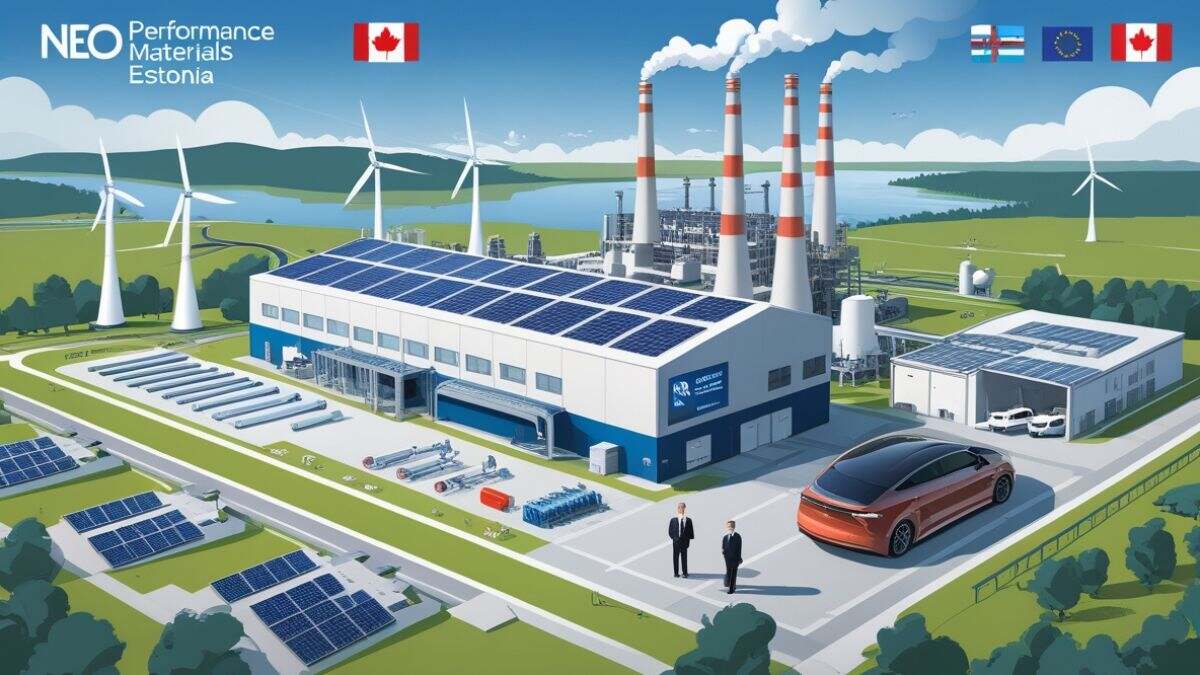On Friday, Neo Performance Materials, a Canadian business, will inaugurate a $75 million magnets facility in Narva, an industrial town in Estonia located over the river from Russia.
Europe Secures EV Magnets
Executives from Europe’s electric car sector are traveling to the sparsely populated northeastern regions of the continent to wait in line for rare-earth magnets, which are crucial elements of EVs and are hard to source outside of China.
On Friday, Neo Performance Materials, a Canadian business, will inaugurate a $75 million magnets facility in Narva, an industrial town in Estonia located over the river from Russia. Neo’s first production will provide parts for up to one million vehicles a year.
As automakers ramp up EV manufacturing at a crucial stage of Europe’s energy transition, the ribbon-cutting is taking place. During a period of global trade concerns, notably those involving rare earths with China, the Estonian factory is providing an opportunity to lock in supply chains.
Critical Magnets Challenge China
Ahead to the factory’s launch, Neo CEO Rahim Suleman said in an interview that “this is the most significant critical materials initiative occurring in Europe now.”
Beijing severely limited the sale of certain of its rare earths in April in retaliation against US President Donald Trump‘s move to increase tariffs on Chinese exports, exposing Europe’s and the world’s vulnerabilities earlier this year.
Neo’s Estonian facility produces neodymium magnets, which are among the goods that China has banned. The magnets assist EV wheels turn by converting the power stored in a battery into motion. Their applications are likewise many, ranging from fighter planes and wind turbines to cellphones.
Neo Leads Magnet Production
Ford Motor Company had to halt manufacturing of its Explorer sport utility vehicle in Chicago for a week earlier this year due to a scarcity of rare earth magnet supply.
In late 2022, months after Russia’s full-scale invasion of Ukraine rocked Europe’s economy, Neo, which also deals in chemicals and metals and has ten production facilities worldwide, including in the US and China, decided to construct the new facility in Estonia. According to Suleman, Neo was able to finish its site on schedule and under budget.
In an Aug. 12 study, analyst Marvin Wolff of Paradigm Capital said, “There is no EV traction motor magnet manufacturing capability in the West except from Neo.”
Neo Secures Major Contracts
At first, the facility will generate 2,000 tons of magnets annually, which is about a tenth of the demand in Europe. Australia will provide the plant with its own raw materials.
According to Suleman, Neo has inked “several” five- to seven-year contracts for between $50 and $100 million, with the start of large deliveries scheduled for 2026.
According to Suleman, “customer demand is over the sky.”
According to a previous Reuters article, one of the purchasers is Schaeffler AG, a German producer of auto parts. On Friday, Estonia will reveal another significant client.
Europe Accelerates EV Production
Following an expansion that may start in 2027, Neo intends to treble capacity there. With European automakers shifting their focus to electric vehicles in anticipation of a 2035 deadline to outlaw the sale of new cars with internal combustion engines, it would meet the skyrocketing demand.
The trend toward more EVs is undeniable, despite indications that the EU directive may be loosened—German Chancellor Friedrich Merz last week supported a proposal by his nation’s automakers to loosen the regulations.
At the Munich auto show last week, Mercedes-Benz Group AG, BMW, and Volkswagen all introduced new electric vehicle models that they said would position them to face China’s growing competition.
Rare Earths Drive Tensions
By the end of October, Trump and Chinese President Xi Jinping will meet in South Korea as part of the Asia-Pacific Economic Cooperation summit, and the trade in magnets is likely to be one of the most difficult topics to discuss.
Even though China recently relaxed its restrictions on rare earths—according to Bloomberg calculations based on Chinese customs data, exports reached their highest monthly level since at least 2012 in August—Beijing‘s prior weaponization of its market dominance has caused Western businesses to search for other suppliers.
General Motors Co. and Texas-based Noveon Magnetics Inc. inked an agreement last month to get rare-earth magnets for the company’s SUVs and full-size pickup trucks. In addition to agreements with MP Materials Corp., a company located in Las Vegas, and E-Vac Magnetics, a division of Vacuumschmelze GmbH, a company based in South Carolina, GM intends to obtain the bulk of its rare-earth magnets directly from domestic vendors.
Neo First Magnet Supplier
With production expected to begin later this year, MP Materials, the only rare earths miner in the United States, will have an annual capacity greater than Neo’s. Apple Inc. will be among the clients the firm serves, and it intends to increase production by adding a plant under Pentagon funding.
To the pleasure of Canada and the EU, however, Neo is the first out of the gate.
At a June Group of Seven conference in western Canada, European Commission President Ursula von der Leyen distributed a magnet from Neo’s factory in the Baltic nation. During a speech, Canadian Prime Minister Mark Carney held up a sample and praised his country as having “immense potential” as a supplier of rare earths.
Neo’s Suleman said, “To be honest, everyone else in the business is typically making promises about what they will be doing in the future.” “We constructed it in less than 500 days.”

